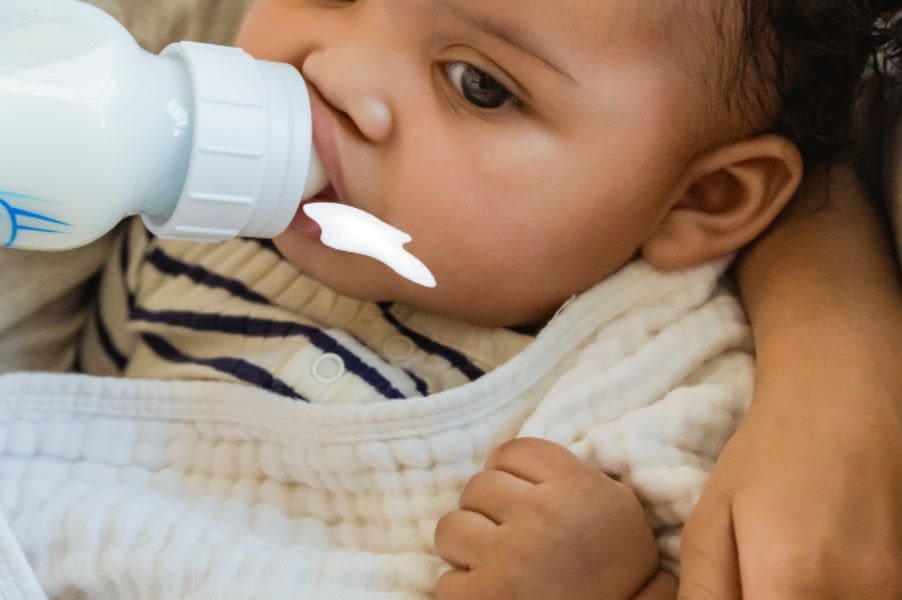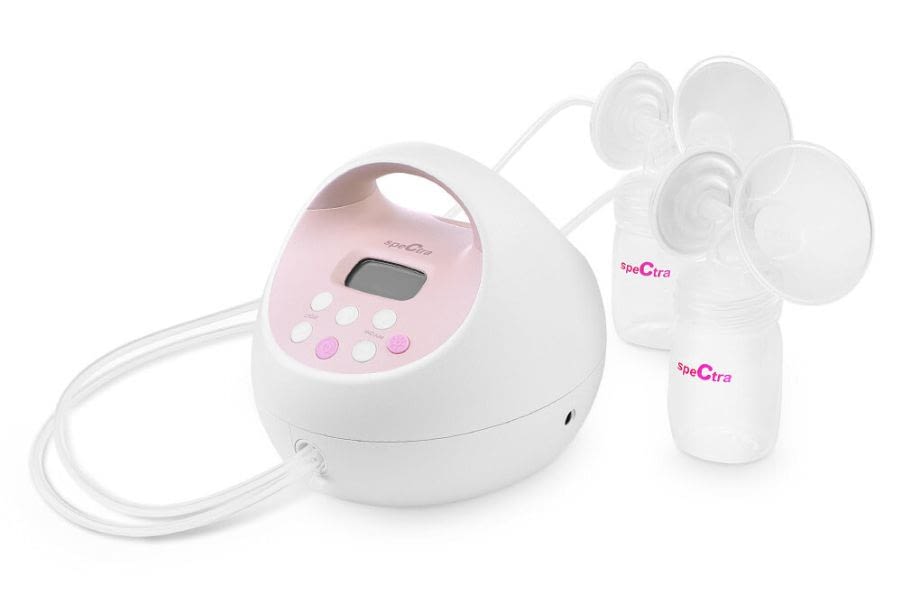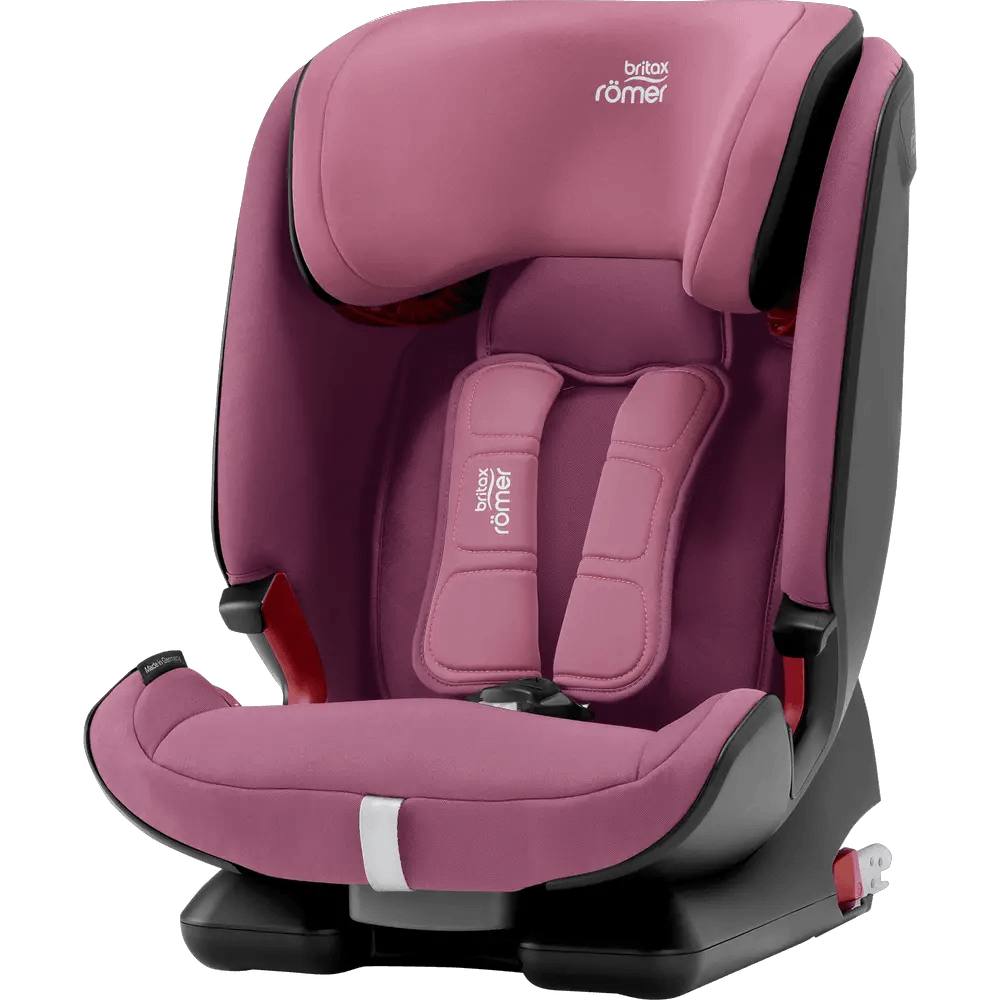Seeing your little one enjoy every mouthful of their bottle might be one of the greatest joys as a parent. However, when you notice that the nipple has become cloudy and discolored over time, it can be off-putting—primarily since baby bottle nipples are not known for being particularly easy to clean.
Don’t worry. I will share six typical causes of cloudiness and a few simple steps on how to clean cloudy baby bottle nipples safely.
Are cloudy baby bottles safe?
No doubt, cloudy baby bottles are visually unappealing, but they are not necessarily unsafe for your baby. The hazy appearance can result from mineral deposits from water or remnants from formula or milk, especially when heated or cooled repeatedly.
However, it’s vital to ensure the bottles are thoroughly cleaned and sterilized, as lingering residue can harbor bacteria. If the cloudiness persists despite proper cleaning, it’s best to replace the bottle to ensure your baby’s feeding equipment is always in optimal condition.
How long are bottle nipples good for?
While it may be tempting to use baby bottle nipples as long as possible, it’s important to note that they aren’t designed to last forever. Typically, bottle nipples should be replaced every two to three months or when they show wear and tear, such as cracking or discoloration. However, if your baby prefers a particular nipple, you may need to replace it more frequently.

Related: Best Bottles For Tongue Tied Babies In 2024
6 Causes of Cloudiness in Baby Bottle Nipples
Baby bottle nipples come in various designs, with the traditional bell-shaped nipple still widely used today. The focus is on flow control, natural shapes, and anti-vacuum venting. While some attempt to mimic the form of a natural breast teat, others have innovative features to prevent falls and regulate the flow rate of liquids.
Parents must consider what they deposit in the bottle – fatty, protein-rich breast milk or fruit juice. When using heat disinfection, it can cause cloudiness on the teats of your child’s feeding bottle.
Whether you are using a combination of breastfeeding and bottle feeding or solely bottle feeding, the cleanliness of the teats and any residue left behind determines how quickly cloudiness develops. The clouding of nipples can be prompted by various factors, such as:
Frequent Usage
One of the most common reasons for the development of cloudiness in baby bottle nipples is frequent usage. Over time and with repetitive cleaning, the material (usually silicone or latex) may start displaying signs of wear, which often manifests as a cloudy appearance.
Hard Water Deposits
Hard water can also lead to a cloudy appearance in baby bottle nipples. It is due to the high mineral content in hard water, which leaves deposits on the nipples after washing them. Over time, these deposits accumulate and contribute to a cloudy appearance.
High Heat
Exposure to high temperatures can cause cloudiness in baby bottle nipples. It usually happens when they are sterilized or washed in hot water repeatedly. The heat can cause the material of the nipples to degrade over time, leading to a cloudy or discolored appearance.
When baby bottles cloudy after boiling, it’s essential to follow the recommended boiling time and not exceed it, as leaving them in boiling water for too long can damage the material and lead to cloudiness. If your baby’s bottle nipples become cloudy after boiling, it’s best to replace them to ensure your baby’s health.
When go in the dishwasher
Do Bottle nipples cloudy in dishwasher? Yes, bottle nipples can become cloudy when washed in the dishwasher. It is due to a combination of factors mentioned above, such as frequent usage and exposure to high heat and hard water deposits.
Before placing bottles and nipples in the dishwasher, always check the manufacturer’s instructions as not all are dishwasher safe. Furthermore, it’s best to avoid using harsh detergents or high heat settings when washing baby bottle nipples in the dishwasher to prevent cloudiness and preserve their quality.
Residue from Milk or Formula
Another common cause of cloudiness is residue from milk or formula. If not thoroughly cleaned, traces of milk or formula can cling to the nipple. Over time, these residues can harden and become difficult to remove, resulting in a cloudy appearance.
Related: Why Can’t You Store Breast Milk In Bottles With Nipples?
Constituents of Baby Bottle Nipples
When cleaning a baby bottle nipple, it is essential to understand its composition. The most common materials used for bottle nipples are silicone and latex, each with unique characteristics.
- Silicone Nipples are made from high-grade medical silicone and are known for their durability and resistance to heat. They do not absorb colors or odors easily and can withstand high temperatures, making them a popular choice for bottle nipples.
- Latex Nipples are made from natural rubber and have a soft, supple feel that mimics the texture of a real nipple. However, they are not as durable as silicone nipples and can degrade over time with excessive heat or frequent usage.
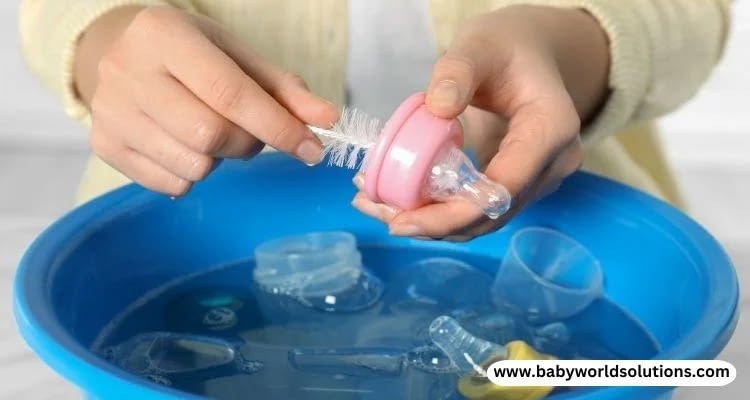
5 Tips for Cleaning Cloudy Baby Bottle Nipples
Now that you know the causes of cloudiness in baby bottle nipples, let’s look at some tips for effectively cleaning them:
- Use a soft-bristled brush or a dedicated nipple brush to clean the inside and outside of the nipple thoroughly.
- Use a mild dish soap or specialized bottle cleaning solution to remove any residue, followed by a thorough rinse with hot water.
- Soak nipples in equal parts vinegar and water to remove hard water deposits. Scrub and rinse after at least an hour.
- If possible, avoid using high heat settings when sterilizing or washing bottle nipples to prevent damage and cloudiness.
- Always inspect the nipples before each use and replace them immediately if they show signs of wear, deterioration, or discoloration.
Step-by-Step Guide: How to Clean Cloudy Baby Bottle Nipples
Soak in Warm Soapy Water
Begin by soaking the nipples in warm, soapy water. Use a mild, non-toxic, baby-safe dish soap to avoid potential harm to your baby. Let them soak for at least 15-20 minutes to loosen any hardened milk or formula residue.
Scrub Gently
After soaking:
- Use a soft, small brush or a toothbrush to scrub the nipples gently.
- Ensure to reach all the corners and ridges.
- Be careful not to scrub too hard, as it may cause the material to degrade faster.
Rinse Thoroughly
Rinse the nipples under warm running water to remove all soap and residue. Make sure all soap suds are thoroughly rinsed off.
Soak in Vinegar Solution
Prepare a vinegar solution using 1 part white vinegar to 5 parts water. Soak the nipples in this solution for 15-20 minutes. Vinegar helps in removing calcium and mineral deposits caused by hard water. For tough stains, create a paste using baking soda and water and apply it to the nipples for scrubbing.
Rinse Again
Rinse the nipples again under warm running water to remove the vinegar. Ensure that all traces of vinegar are thoroughly rinsed off.
Air Dry
Let the nipples air dry on a clean dish rack or towel. Please do not attempt to speed up the process using heat, as it can further cloud the nipples.
Sterilize
Finally, sterilize the nipples according to the manufacturer’s instructions or boil them in hot water for 5 minutes. This will ensure they are entirely free of any harmful bacteria.
Therefore, with these simple steps, you can be aware of how to make baby bottles clear again. However cleaning, if the cloudiness persists even after a thorough cleaning, it might be time to replace the nipples.
It is especially true for latex nipples, which degrade more quickly than silicone ones. Regular replacement of bottle nipples contributes to maintaining good hygiene and your baby’s health.
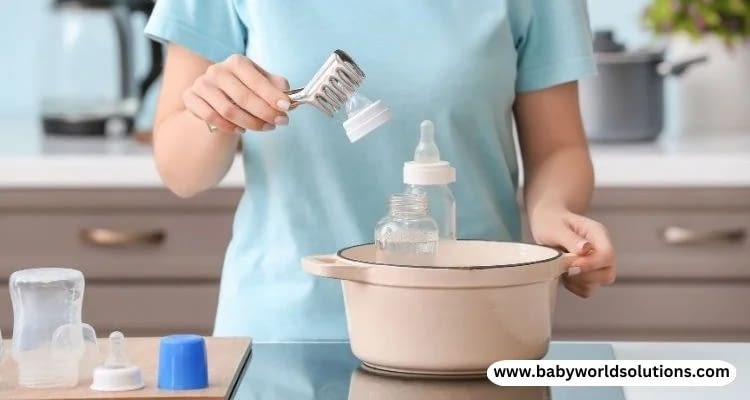
How to Get the Smell Out of Baby Bottle Nipples
Baby bottle nipples can often retain the smell of milk or formula, which can be off-putting for both the parent and baby. However, there are a few simple steps that can help eliminate these odors:
- Vinegar Solution: To clean the nipples, first prepare a solution using 1 part of white vinegar and 5 parts of water. Then, soak the nipples in this solution for about 15-20 minutes. Vinegar is a natural deodorizer and can help to eliminate stubborn smells.
- Baking Soda Rinse: Baking soda is another natural deodorizer that can effectively combat odors. Make a solution with one teaspoon of baking soda to 1 cup of water. After soaking the nipples in vinegar solution, rinse them in this baking soda solution.
- Sunlight Exposure: Allow the nipples to air dry in direct sunlight. Sunlight acts as a natural disinfectant and can significantly reduce any lingering smells.
- Steam Sterilization: Use a baby bottle sterilizer to steam the nipples. The high heat and steam can help eliminate any residual odors.
- Regular Replacement: If, despite these steps, the smell persists, it may be a sign that it’s time to replace the nipples. Frequent replacement of bottle nipples not only ensures hygiene but can also prevent any off-putting smells.
Can you reuse bottles for second baby?
Reusing bottles for a second baby is generally safe, provided the bottles are in good condition and are thoroughly cleaned and sterilized. Any components showing signs of wear, such as cracks, discoloration, or cloudiness, should be replaced to ensure the safety and health of your child.
Always remember to check for BPA-free labels, as exposure to BPA could have potential health risks. However, suppose you’re planning to use previously stored bottles. In that case, it’s vital to inspect them for any changes in color or texture that may indicate degradation, which could potentially harm your baby.
Read Also: Does Pumping Burn Calories?
Can Avent Bottles Go in the Dishwasher?
Yes, Philips Avent bottles are designed to be dishwasher safe. However, it’s important to note some precautions to ensure the longevity and safety of the bottles.
- Rack Position: When placing Avent bottles in the dishwasher, ensure they are on the top rack only. This position is away from the heating element and will protect the bottles from extreme heat that could cause warping or damage.
- Separate Components: Disassemble the bottles before washing. Separate the bottle, the nipple, and other parts to ensure thorough cleaning and drying.
- Consider Using a Dishwasher Basket: Small parts, like nipples and bottle caps, can easily get lost in the dishwasher. Use a dishwasher basket designed explicitly for baby bottle parts to avoid this.
- Use a Gentle Detergent: Avoid using harsh chemicals or abrasive detergents to clean the bottles. Instead, opt for a gentle, baby-safe detergent that will not leave any residue or cause damage.
Conclusion: How to clean cloudy baby bottle nipples
To remove stubborn stains from baby bottle nipples, I recommend using natural and convenient items such as baking soda and white vinegar. Not only will this eliminate any bacteria that may be present in the rubber or silicone teats, but it will also help get rid of any lingering odors from milk, juice, or cereal residue.
So, are cloudy baby bottles safe? Yes, but an electric sterilizer is the best option for keeping bottles germ-free. However, if you don’t have access to one, you can use the sanitizing function of your dishwasher or a microwave oven every couple of weeks.
1 Visit today


